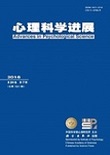Socioeconomic status is an important topic concerned by social class psychology. With the transformation of social development, its influence on individual psychological development has been paid increasing attention. In recent years, scholars in different fields have carried out a series of discussions on the relation between socioeconomic status and mental health, especially depression, but results remain mixed. Some have reported negative correlations between socio-economic status and depression, and others have found weak to nonsignificant correlations. In general, the reported correlation coefficients ranged from -0.45 to 0. At present, no studies have systematically generalized the scattered results on this topic, nor have they dissected the reasons for the inconsistent results. Therefore, it is necessary to gain better insight into the relation between socioeconomic status and depression, and the factors that affect this relation. At the same time, China is in the deep-water area of reform and development. The rapid economic development has made the gap between the rich and the poor increasingly intensified, and it has also made class mobility more difficult. Therefore, exploring the relation between socio-economic status and depression can provide a more detailed basis for the formulation of the current social mental health service system in China.
In Chinese database (China National Knowledge Infrastructure database), the keywords “社会地位” or “经济地位” were respectively matched with “抑郁”, and the literatures with such keywords in the abstract were searched. In foreign databases (Web of Science Core Collection, Elsevier SD, PsycINFO, PsycArticles, and ProQuest Dissertations and Theses), the keywords “socioeconomic status”, “socio-economic status”, “social class”, and “social status” were matched with “depress*” respectively, and the literatures with such keywords in the abstract were searched. In addition, to avoid omissions, literature supplementation was performed through citations during literature reading and Google Scholar. Finally, a total of 11110 studies were obtained. After literature screening, a total of 58 studies (including 65 effect sizes and 76,715 participants) were finally included, with a time span from 1973 to 2022. The correlation coefficient r was used as the effect size, and the random effects model in software Comprehensive Meta-Analysis Version 3.0 was used to conduct the meta-analysis.
The main effect analysis indicated a small significant negative correlation between socio-economic status and depression (r = -0.15). Further sensitivity analysis showed that the estimated effect size fluctuated between-0.158 and -0.147, indicating that the estimated result was stable. The moderating effect analysis showed that: (a) The moderating effect of the sampling year was significant (b=-0.008, 95%CI [-0.015, -0.001]), and the relationship between socioeconomic status and depression became stronger with the development of the times; (b) The moderating effect of SES measurement tool is significant, and the correlation measured by SSS is the strongest, while the correlation measured by FISS or principal component analysis was the weakest; (c) The moderating effect of SES measurement type was significant, and the correlation between subjective socioeconomic status and depression was higher than that of objective socioeconomic status;. (d) The moderating effect of SES measurement form was significant, and the correlation between family socioeconomic status and depression was lower than that of one's own socioeconomic status; (e) The moderating effect of depression measurement tool was marginally significant, the correlation measured by SCL was not significant, and the correlation measured by CDI or CESD was higher than other tools; (f) Gender, age, individualism index and design form (cross-sectional design vs longitudinal design) had no significant moderating effects on the relationship between socioeconomic status and depression.
This is the first study to analyze the overall strength of the association between socioeconomic status and depression. The results showed that there was a significant negative correlation between them, indicating that relevant public policies should be formulated and supporting schemes should be provided to care for the socio-economic disadvantaged groups, especially to improve their education and income levels, so as to prevent the occurrence of group depression. In addition, the present study also found that the effect size was affected by many operational characteristics (i.e., socio-economic status measurement type and depression measurement), suggesting that future researchers should pay more attention to the choice of scales when conducting research. Specifically, for socioeconomic status, objective and subjective indicators should be combined as far as possible, and it is best to directly measure the socioeconomic status of the individual rather than the family. For depression, scales that measure too few depressive symptoms should be avoided as far as possible. This study also found that the effect size is affected by the development of the times, suggesting that China should vigorously promote the policy of common prosperity in the new era, promote class mobility, prevent class solidification and the further expansion of the gap between the rich and the poor, so as to reduce the occurrence of depression from the social level. Finally, although age and research design failed to moderate the relation between socioeconomic status and depression, both essentially reflect the long-term effect of socioeconomic status on individual's depression. This suggests that public services and public policies should pay attention to long-term effectiveness in the implementation.




